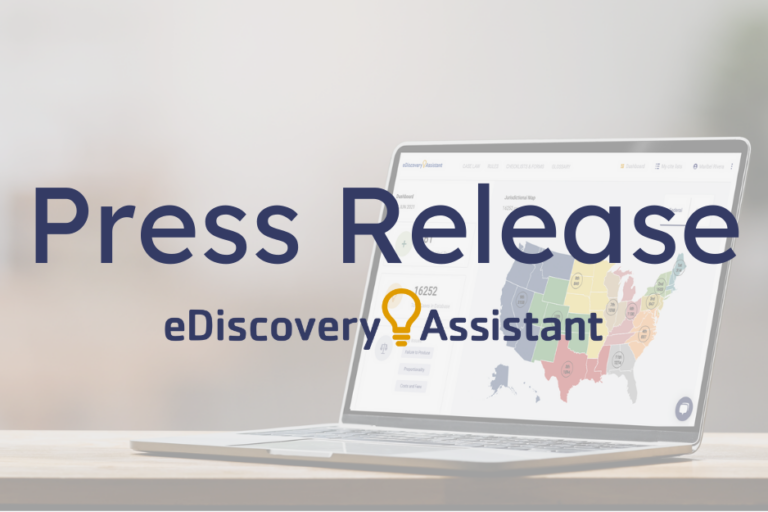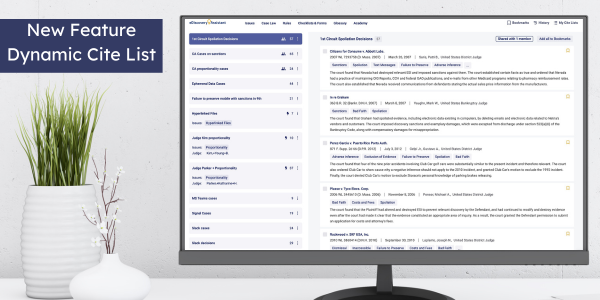 These tips apply no matter whether you are a law firm, corporation, municipality, government entity, or other type of organization.
These tips apply no matter whether you are a law firm, corporation, municipality, government entity, or other type of organization.
Technology of review software is constantly evolving and many platforms are moving to the cloud. Firms that have purchased behind-the-firewall solutions are re-evaluating their expenditures and in-house departments are looking to leverage their own tools to reduce costs with outside counsel. Firms that have had Summation and Concordance in the past are reassessing their options.
So, how do you choose? There are many, many tools on the market and it’s a dizzying array of choices that are not apples to apples comparisons. How can you boil them down to making a decision?
Start with assessing your needs. You need to think about what you need now, what your capabilities are to support a tool, and what you want for the future. Here are my six tips on how to pull that information together to start looking at your options. These apply no matter whether you are a law firm, corporation, municipality, government entity, or other type of organization:
1. Evaluate your past, current, and future litigation. You need to understand what you’ve used in the past, what you are using now and what you are likely to need in the future. Look back 3-5 years at your litigation portfolio — how many matters did you have each year and break them out by type, e.g., employment, complex litigation, personal injury, bankruptcy, etc. Each type of case will have its own blueprint that you’ll be able to use to scope your needs. For each type of matter, look at how many custodians/witnesses you had, the volume of documents you preserved, collected, and produced, and the total amount spent. Make a list of all of the the types of charges that you have paid to outside counsel or a provider, or, if internal, how much the salaries of the staff you have to maintain are to keep your litigation support services alive. Get a complete picture of what you have spent. Compare that to now and then to what you are anticipating will be your litigation portfolio going forward. Is there a regulatory change that will increase your litigation? An economic downturn coming that means you don’t want to invest capital? Are you seeing a boon in litigation this year that you need to support for the next 2-4 years (a typical case can last three months to 10 years, with an average of 2-4 years)? Ask the questions that are unique to your organization to plan. You should end up with a picture estimating how many cases you may have in each area, a potential volume of documents per case (in GB) and a cost for each case broken out by expenditure (attorney time, collection, hosting, processing, etc.). Now you know what you need to plan for — but be sure to also include some allowances for the unexpected Second Request or other hit to your analysis.
2. Assess your internal resources. Do you have competent project managers and litigation support people on staff? If not, you need to plan for those services. I’ve written before about the absolute need for great project management — you have to have someone who knows the review platform and understands how to handle the data. You have options — many review platforms have project managers on staff that you can pay by the hour. If you don’t have those services internally, keep in mind that you will need them. The notion of the project manager is becoming better known now than it was even a year ago, but I still see many lawyers not understanding the value of what a project manager does. If that’s you, go read this and you’ll gain a better understanding. In addition to a PM, you need people managing the eDiscovery process for each matter. Legal holds, custodian interviews, managing productions and logs, all of that plus a lot more takes knowledgeable professionals. If you short circuit those tasks, you’ll pay for it in the long run. Remember that your professional obligations went through the roof with the 2006 amendments on ESI and they’ve only gotten tougher to meet.
3. Behind the firewall solution or one in the cloud? I am 100% in favor of a cloud-based solution. The ONLY exception is if you have an already established and well functioning relationship with IT to manage the hardware and software needs that come with an on-premise solution. I had this debate recently with an attorney about on-premise solutions only having the one time cost vs. the ongoing hosting of a cloud-based solution. His argument was that some firms cannot support ongoing monthly costs. That may be true — that you have a one time license fee purchase vs. ongoing hosting charges. But it’s really not anymore — that model died with Summation. You almost always have an annual maintenance fee that pays for the continued updates to the software AND then you have to have someone internally who can install them and make sure everything works properly. Make sure you add that salary to the cost of your on-premise solution along with the hardware costs to upgrade. Those are all enormous extra costs that lawyers forget about in the calculation. There are also many, many intangibles that cannot be predicted that mean having folks who do this for a living is a better use of your money. So what is a cloud based solution? To me, a cloud-based solution one that you pay someone else to host. That may mean using a solution like Cloud Nine or DISCO, or it can mean using Relativity with a services provider who has an on-premise license. Simply put, those organizations will have the people in place to manage the hardware and the software to keep your review platform up and running all the time. It becomes their job to implement new features and improve run times or help you figure out better solutions for more cost-effective ways to manage discovery. They may also have project management resources that you can leverage on an as-needed basis vs. having someone on staff. One key to the cloud based model is to manage the data. Take down what you aren’t using, ask about moving data to a lower tier when you are sitting on a motion for months on end or evaluate the cost/benefit analysis of taking it down completely and putting it back up after appeal if the case comes back. You have to make decisions about managing your data in the cloud, or you risk paying more than you need to and your client getting angry.
4. Budget/cost. These are two different things and you need to think through both of them. We do budgets for each individual matter for our clients and our costs for review technology are passed through to them. But we also have costs at our firm that we absorb every year even with hosted solutions — evaluating practices, getting better strategy in place, doing reports for clients at the end of the year or a matter. What is your plan? Will you pass the costs through and what costs will you absorb? Think about the process for your cases by client and consider each element. You also need to be sure to have an understanding of every single potential line item of spending with a provider or firm and they should all be spelled out in writing. One lawyer recently told me she was charged by production for inputting data and the high volume of productions caused her costs to go through the roof. Plan for that. Your providers should be your partners. If they are nickel and diming you — find someone else and fast. You can move data and it’s not that hard. You have choices, you just need to know what they are. If you are paying for the solution, what is your budget? Is it realistic? You will start to get a better picture of whether your budget is realistic when you start to talk to providers about the volume of data you have in a year. That is the determining factor. Seat licenses should be going the way of the dinosaur, but you’ll still see them so be sure to ask.
5. Functionality of the tool. What are your needs? Do you need a basic system that can house standard email, documents and files? Do you need to review social media? What about audio or video? Want to see spreadsheets open in the application? Do you want email threading or cluster searching? What kinds of analytics will you need? All of those questions are answered by your data, your internal resources to handle and manage the data and the volume. The higher the volume, the more likely you are to need more advanced analytics like clustering or technology assisted review. Keep in mind that some tools are plug-in-play meaning that you can use one review platform and plug a more advanced analytics tool in as needed. That’s another reason you need seasoned, knowledgeable tech folks on your side. When working with a provider or talking to platform, ask for a list of features. There are basic ones you want that we’ll cover in a future article.
6. An exit strategy. Nothing is perfect, and no matter how good your process at vetting a tool before you load data in, you may not love it. You need to know going in how to get your data out and make sure there are no “exit fees.” The cloud is based on the cost of storage — what we refer to as hosting the data on a month to month basis by GB. If you aren’t hosting, you aren’t paying. Another part of the exit strategy is managing the data as I mentioned above. Your partner provider should be talking to you about the status of the case and how to manage the costs proactively. If they are not, you should consider whether they are the right partner for you or your organization.
The technology that’s available right now is so cost-effective that any size case can handle it. You do need to do an assessment of what you need, investigate tools that meet those needs, and your cost structure. But don’t just put it up and forget about it or you’ll find your inbox filled with invoices that neither you or your client want to pay.
This article first appeared on Above the Law.
[social_warfare buttons=”Facebook, Twitter, LInkedIn”]




